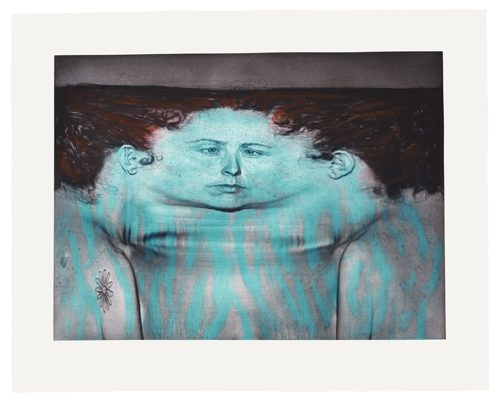For this post, our Marketing and Communications Assistant Cecilia Rosser takes a closer look at the story behind My Blue Lake, one of Kiki Smith’s most intriguing print works.
In the early 1990s, having worked on several depictions of different parts of the body, Kiki Smith became interested in ways of two-dimensionally depicting the three-dimensional body. She was keen to create a work that showed the skin of her body as a flat image, similar to the way a map depicts a flattened image of the globe.


Kiki Smith came across a special periphery camera in the British Museum in London. This camera was originally designed for conducting geological surveys, measuring the heights and depths of a landscape realistically to record objects and features of geological significance.
The camera allowed the artist to produce a 360-degree image of her head and upper body from all sides simultaneously, just like a map of the world shows all sides of the globe at once.
In July 1994, Smith spent two days at the British Museum, where she was photographed sitting motionless on a rotating Lazy Susan-style turntable.
Kiki Smith produced several negatives, one of which was used to make an enlarged photogravure for My Blue Lake. The resulting prints were individually hand-coloured by Smith as they emerged from the press.
Through this process, the human form becomes a landscape to explore.
See My Blue Lake up close until 19 January 2020 as part of our exhibition with Kiki Smith: I am a Wanderer.
Want a closer look? Dive into our Virtual Exhibition – Kiki Smith: I am a Wanderer featuring curator’s insights, hidden histories, short videos, blog posts, children’s trails and more here.
